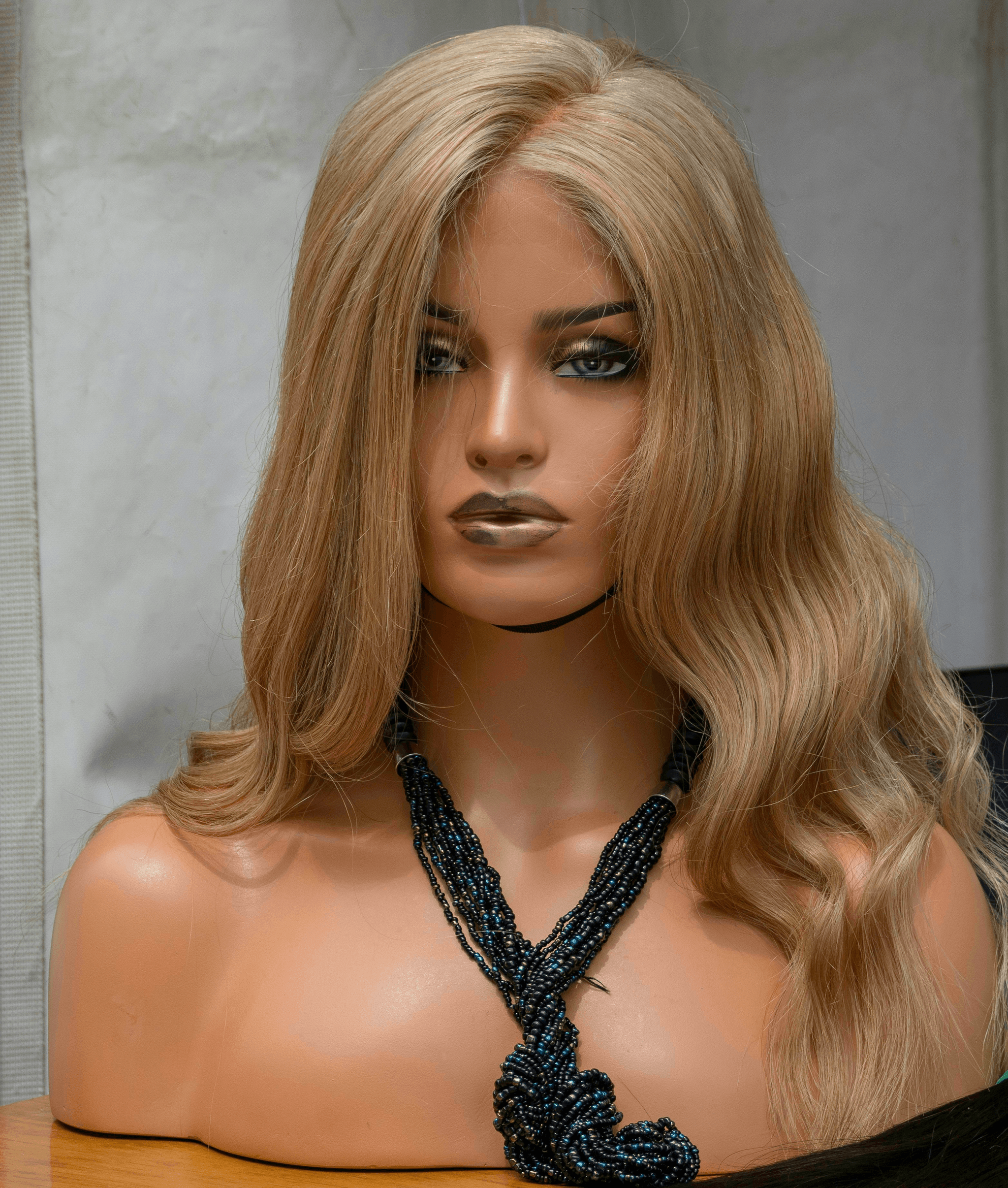Introduction

Wigs have transformed from mere fashion accessories to essential tools for self-expression and creativity. Whether you're looking to switch up your style or need a practical solution for hair loss, understanding how are wigs made can open up a world of possibilities. This guide will take you through the fascinating journey of wig crafting, from material selection to the final assembly, revealing the secrets behind creating stunning wigs.
Discover the Art of Wig Making
Wig making is an art form that combines craftsmanship with creativity, allowing individuals to express their unique styles. The process begins with careful wig material selection, where you can choose between synthetic and human hair to suit your needs and preferences. By mastering this art, you not only elevate your look but also gain insight into a world filled with textures, colors, and styles waiting to be explored.
Unveiling the Secrets Behind Wigs
Many people wonder about the intricate processes involved in wig creation—how are wigs made? From selecting high-quality materials that ensure comfort and durability to understanding the methods used for bleaching and dyeing of wigs, every step plays a crucial role in achieving a flawless finish. By unveiling these secrets, we empower you with knowledge that enhances your wig-wearing experience and boosts your confidence.
The Journey of Crafting Wigs
Crafting a wig is akin to embarking on an exciting adventure that combines artistry with technical skills. The journey starts with choosing the perfect materials during wig material selection and continues through various stages including bleaching and dyeing of wigs for vibrant colors. Finally, you'll delve into the assembly of the wig where all components come together seamlessly—a rewarding experience that results in a beautiful piece tailored just for you.
Wig Material Selection

Choosing the Right Hair Type
Choosing the right hair type for your wig can feel like a daunting task, but it doesn't have to be! Consider factors such as texture, length, and color that best suit your style and personality. Remember, each hair type brings its own unique qualities—be it silky straight strands or voluminous curls—so choose wisely!
Understanding Synthetic vs. Human Hair
The age-old debate: synthetic vs. human hair wigs! While synthetic wigs are often more affordable and require less maintenance, human hair wigs offer a level of authenticity that can’t be beaten. If you’re wondering how are wigs made with various types of hair, understanding these differences will help you make an informed choice.
Quality Matters: Comfy Wigs and Beyond
Quality is key when it comes to wig material selection; after all, who wants an itchy head? Investing in high-quality materials ensures not only comfort but also durability in your creations. As you explore options for bleaching and dyeing of wigs later on, remember that top-notch materials will yield better results every time!
Bleaching and Dyeing of Wigs

Preparing Your Wig for Color
Before you even think about picking up that bleach or dye, proper preparation is key to achieving stunning results. Start by gently washing your wig with a sulfate-free shampoo; this removes any product buildup and ensures that the hair can absorb color evenly. Once clean, allow your wig to dry completely—this step is crucial because applying bleach or dye on wet hair can lead to unpredictable results.
Additionally, consider conducting a strand test on a small section of hair before fully committing to your color choice. This will give you an idea of how the hair reacts and whether it achieves the desired shade. Remember, when discussing wig material selection, human hair typically responds better than synthetic fibers during this process; however, both types can be successfully dyed with care.
Techniques for Perfect Bleaching
Now that your wig is prepped and ready for action, let’s dive into some tried-and-true techniques for perfect bleaching! One popular method involves using a mixture of developer and bleach powder—start with a lower volume developer (around 20) if you're new to this process; it’s gentler on the hair while still effective in lightening colors. Apply the mixture evenly using a tint brush, ensuring all strands are coated but avoiding excessive saturation that could lead to damage.
Timing is everything when it comes to bleaching wigs; keep an eye on those strands! Depending on how dark the original color is, you may need anywhere from 15 minutes up to an hour for optimal results—just remember: patience pays off! After rinsing out the bleach thoroughly with cool water, follow up with a deep conditioner specifically designed for bleached hair; this will help restore moisture lost during processing.
Achieving Vibrant Colors Safely
With your freshly bleached wig in hand, it's time for the fun part: dyeing! To achieve vibrant colors safely while maintaining quality—especially considering different types of wig material selection—it’s best to use semi-permanent dyes as they tend not only to be less damaging but also offer rich hues without overwhelming chemicals. Apply dye generously using gloves and ensure even coverage throughout each section of hair.
After allowing adequate processing time as per product instructions (typically around 20-40 minutes), rinse with cool water until it runs clear; this helps lock in those vibrant colors you've worked so hard for! Lastly, don’t forget about aftercare: use color-safe shampoos and conditioners designed specifically for dyed wigs which will help maintain their beauty over time while keeping them looking fresh!
Assembly of the Wig

Once you've navigated through wig material selection and perfected your bleaching and dyeing of wigs, it's time to dive into the assembly of the wig. This stage is where your creative vision truly comes to life, transforming strands of hair into a stunning piece that reflects your personal style. With the right tools and materials in hand, you'll be well on your way to mastering how are wigs made.
Tools and Materials You Need
Before you start assembling your masterpiece, gather all necessary tools and materials for wig construction. Essential items include a wig cap or lace base, a sturdy mannequin head for shaping, needles, thread, scissors, and a hot glue gun for those tricky spots. Additionally, having various types of hair clips will help keep everything in place while you work—trust us; they’re lifesavers when it comes to managing those flowing locks!
When selecting materials for assembly, remember that quality matters just as much as during the wig material selection phase. Choose high-quality wefts or bundles if you're working with human hair; synthetic fibers can also work wonders if you're looking for something budget-friendly. The right combination will ensure durability and a natural appearance once everything is stitched together.
Step-by-Step Wig Construction
Now that you have your tools ready, let’s break down the step-by-step process of assembling the wig! Start by placing your chosen wig cap or lace base onto the mannequin head securely; this will serve as the foundation for constructing your fabulous creation. Next, measure out sections of hair wefts according to how you want them distributed across the cap—this is where planning pays off!
Begin sewing or gluing each section onto the cap starting from the nape of the neck upwards towards the crown; this technique mimics natural hair growth patterns for an authentic look. Keep in mind that consistency is key here—ensure each row overlaps slightly with its predecessor to avoid gaps that could reveal too much scalp! As you progress through this assembly phase, don't forget to check periodically how it fits; adjust as needed before securing everything permanently.
Finishing Touches for a Flawless Look
As you near completion in assembling your wig masterpiece, it’s time to focus on those all-important finishing touches! Trim any excess lace around the perimeter carefully so that it blends seamlessly with your natural hairline when worn—this small detail can make all the difference in achieving an undetectable look! If you've opted for bleaching and dyeing of wigs earlier on, now's also a great moment to style it with curling irons or straighteners since many synthetic fibers can withstand some heat.
Lastly, don’t forget about proper maintenance tips after assembly: regular washing using gentle products will keep both synthetic and human hair looking vibrant over time! Store your finished wig on a stand away from direct sunlight when not in use; this helps preserve its shape while preventing tangling or damage caused by environmental factors. With these final adjustments made during assembly of the wig process complete—you’re ready to rock that custom creation!
Conclusion

As we wrap up our exploration into the fascinating world of wig making, it’s clear that mastering this craft is not just about creating a beautiful accessory; it’s about embracing a form of self-expression. Understanding how are wigs made involves a journey through material selection, dyeing techniques, and the intricate assembly of the wig itself. With practice and passion, anyone can elevate their skills and produce stunning custom wigs that reflect their unique style.
Mastering the Craft of Wig Making
To truly master the craft of wig making, one must delve deep into every aspect—from wig material selection to the final touches in assembly of the wig. Each step is essential; selecting quality hair types ensures longevity while understanding bleaching and dyeing of wigs allows for vibrant personalization. By honing these skills, you can create pieces that not only look fantastic but also feel comfortable and natural.
Elevate Your Style with Custom Wigs
Custom wigs offer an unparalleled opportunity to elevate your style in ways that off-the-shelf options simply can't match. Whether you're experimenting with colors through careful bleaching and dyeing of wigs or choosing specific textures during wig material selection, your creativity knows no bounds. Customization means you can design a look that's uniquely yours—perfect for any occasion or mood!
Personalized Support to Enhance Your Experience
Navigating the world of wig making can be overwhelming, but personalized support can make all the difference in your journey. From guidance on how are wigs made to tips on perfecting your assembly of the wig, having someone in your corner helps build confidence and skill. So don’t hesitate to seek out resources or communities that share your passion—together, you’ll create stunning masterpieces!
